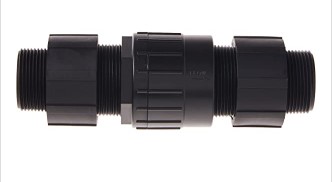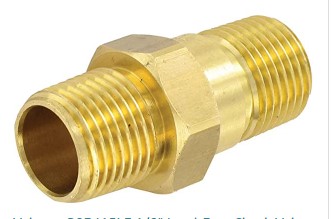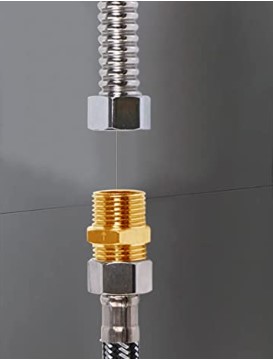You will probably agree that no experience is worse when using the washing machine than dealing with a wastewater backflow. The experience is also similar to that of water flowing out of the washing machine during the rinse cycle, and that’s where a washing machine check valve comes in.
This simple device stops backflow, thus the name backflow preventer. It does so by only allowing a one-way wastewater flow as soon as it’s pumped out of the washer tub. In the long run, that prevents the water from returning to the washer and damaging it.
Note, however, that as good as a check valve is, it comes with a few concerns worth reflecting on before deciding to install them. To help you decide, I’ll discuss both the valve’s pros and cons.
Moreover, I’ll walk you through the check valve installation process.
Here’s what I’ll discuss:
- What’s a washing machine check valve?
- How does it work?
- Pros and cons of a check valve
- Do I need a check valve on my washing machine?
- Types of check valves
- How do you install check valves on a washing machine?
- When should you replace your washer’s check valve?
Here we go!

What Is a Washing Machine Check Valve?
A check valve is a small valve on modern washing machines that only allows one direction of fluid flow. In this case, it stops backflow. A check valve sometimes goes by the name non-return valve, retention valve, anti-siphon valve, or one-way reflux valve.
This valve is fitted in the washer’s drain system or inside the drain pump to stock backflows. There are a few others, however, that are fixed at the end of the cold and hot water fill hoses to stop the wastewater from going back into the fill hoses and damaging them.
How Does a Check Valve Work On Washers?
A check valve creates a tight seal that stops wastewater backflow into the washer and leaking. Once it shuts, water can’t go back or leak out as it creates a water hammer.
The valve is fitted onto the washing machine’s drain pipe, inside the drain pump, or at the end of the fill hoses to create an effective barrier against backflow and water leakage. It only allows one water flow direction, meaning wastewater from the washer tub will pass through it but cannot flow back.
Its effectiveness is primarily due to its rubber membrane (or spring damper) that allows it to seal itself completely against backflow and leakages. Some non-return valves, nonetheless, have a rubber ball and not a rubber membrane, which is equally effective as the membrane.
When wastewater flows out of the water under high pressure, the pressure compels the rubber membrane or ball to open. Once the water is no longer pumped out, the pressure drops, pushing the rubber membrane or ball into its original position to stop backflows and water leakages.
Pros and Cons of Check Valves on Washers
Check valves have advantages and disadvantages; this is where you decide if they are worth installing. Let’s discuss them:
Pros
Here are the advantages of check valves on washing machines:
- Backflow prevention – Check valves create an airtight seal that stops wastewater from flowing back into the washer and causing damage.
- Stops leakage – Besides stopping the wastewater from flowing back when the pump is not running, a check valve prevents the water from leaking out during a typical rinse cycle.
- Clean wash – A check valve protects your laundry water from contamination by stopping the wastewater from flowing back into your drain pipe and getting circulated. In the end, that ensures your laundry is clean.
- Cheaper than other backflow preventers – Check valves are not the only backflow preventers. There are others, such as standpipes and air gaps which are expensive. Check valves are, however, cheaper, given that you can get them for under $10 on Amazon.

Cons
Here are the disadvantages of fitting check valves:
- Water hammer effects – A water hammer is when the water pressure heightens and shuts the check valve down. At times, that damages the drain system, leading to expensive repairs.
- Hard to inspect – Once you fit a check valve, it’s hard to examine them. It becomes hard to tell when they need replacing unless you watch out for other signs, which will be discussed later.
- Susceptible to clogging – Check valves can clog. They can accumulate debris and dirt, which can hamper their operational effectiveness.
- May suffer backflow issues – Sometimes, a check valve may encourage a backflow instead of stopping it. That may happen when it clogs up or when you install it incorrectly.
Do I Need a Check Valve On a Washing Machine?
After going through the concerns, you may doubt if you need a check valve. Let’s face it; while water hammer effects are unavoidable, you can do something about clogging and backflow issues.
For example, cleaning the check valve when it clogs can improve its effectiveness and stop backflow issues. Additionally, you can prevent backflow issues by correctly installing the check valve.
But on a positive note, you need a check valve because it stops backflow and leakages (when well installed), keeps your laundry water free from wastewater contamination, and protects your washer from backflow-related damages.
Besides, installing a backflow preventer, such as a check valve, is a mandatory code in some communities. If you don’t, then you could be facing prosecution.
Types of Check Valves for Washing Machines
While there are so many check valves out there, here are the ones that are ideal for washing machines:
- Ball check valves – Ball check valves feature a ball system that rests in a cage, allowing wastewater to go past it but not flow backward. The ball raises when water passes through it and closes when it stops.
- Swing check valves – Unlike ball check valves which feature a ball system, swing back valves have a swing arm system that allows wastewater to flow and stops it from returning. The swing arm swings out when wastewater passes through and swings back in when it stops.
- Flapper check valve – This is the commonest washer check valve, which features a rubber flapper system mounted to a spring arm. The rubber flapper springs open when wastewater goes through it and closes when the water flow stops. Thus, it stops water from flowing back into your drain pump.
- Diaphragm check valve – The diaphragm check valve features a flexible diaphragm-style gate that pushes outside to allow wastewater flow and pushes in when the water stops flowing. That enables it to prevent wastewater backflow.
How Do You Install a Check Valve On a Washing Machine?
Generally, here are the requirements for installing a check valve on a washer:
- New check valve
- Adjustable pliers
- Pipe wrench
- Plumbers or Teflon tape
- Pipe cutter
The Steps
Step 1 – Turn off the water supply
Locate your washer’s water supply line and turn it off. This is important to prevent water wastage when working on the washer.
Step 2 – Cut off the supply tube
Now that the water supply line is off, use the pipe cutter to gently cut the supply tube at the point you want to install the check valve. While at it, leave some allowance for moving the washing machine.
Step 3 – Fit the check valve
Install the check valve into the water supply line, and the washers are avoided. So, one end of the valve should fit into the supply tube while the other should fit into the end of your washing machine. After that, tape up the joints with Teflon tape to promote an airtight seal.
Step 4 – Test the valve
Turn back on the water supply to see if the check valve works well. Make necessary adjustments if the water is leaking.
Step 5 – Secure the valve
Use the pliers and pipe wrench to tighten the check valve. Ensure its airtight to prevent water leakage.

When Should You Replace the Check Valve On a Washer?
Remember, a washers check valve may clog, and its effectiveness reduces once that happens. That’s, however, not the only way it can fail. It can also wear out. So, how do you know it’s time to replace it? Well, that’s by identifying these signs:
- Water leakage – If water leaks from your washer, it could point to a defective check valve. And so, consider replacing the valve.
- Spin vibrations – Sometimes, the washer spins violently (in a vibration manner) when the check valve is defective.
- Clogged drain – If the drain hose is clogged, there’s always the chance it’s because of a clogged check valve. Thus, check out the valve from clogging and replace it if that’s the case.
- Undrained wastewater in the drum/tub – If water remains in the drum tub after the washer completes the drain cycle, it’s probable because of a failing check valve.
- Noise during the washer drain cycle – If the washer makes a weird sound during its drain cycle, it could be because of a failed check valve.
People Also Ask
1. But Can I Use a Check Valve for Washing Machine Drain?
A check valve on a washing machine’s drain can prevent wastewater backflows and leakages. It’s, however, not the only option, as you can also use standpipes or air gaps. The difference is that check valves are easy to install and affordable.
2. And Does A Washing Machine Need a Double Check Valve?
Most washing machines feature built-in backflow preventers that perform the job of double check valves. So they don’t need double check valves. However, checking if your washer has a built-in preventer is essential.
3. Should You Use a Check Valve On a Washing Machine?
Use a check valve on your washing machine if you are looking for an easy-to-fit and affordable way of preventing wastewater backflow and leakages. It’s pretty effective in protecting your washer from backflow wastewater damage.
4. How Can I Tell a Failed Check Valve?
You can know if your check valve has failed if the washer leaks, vibrates while spinning, or makes a noise when draining. Other signs include stagnant water in the drum or tub and drain clogging.
Closing Thought
Above are the basics of the washing machine check valve. Clearly, you need this valve to prevent wastewater backflow and leakages, and once that’s the case, you can stop water damage effects.
So, while they require high maintenance in terms of cleaning and inspection, they are more affordable, making their replacement almost seamless.
Also Read:
